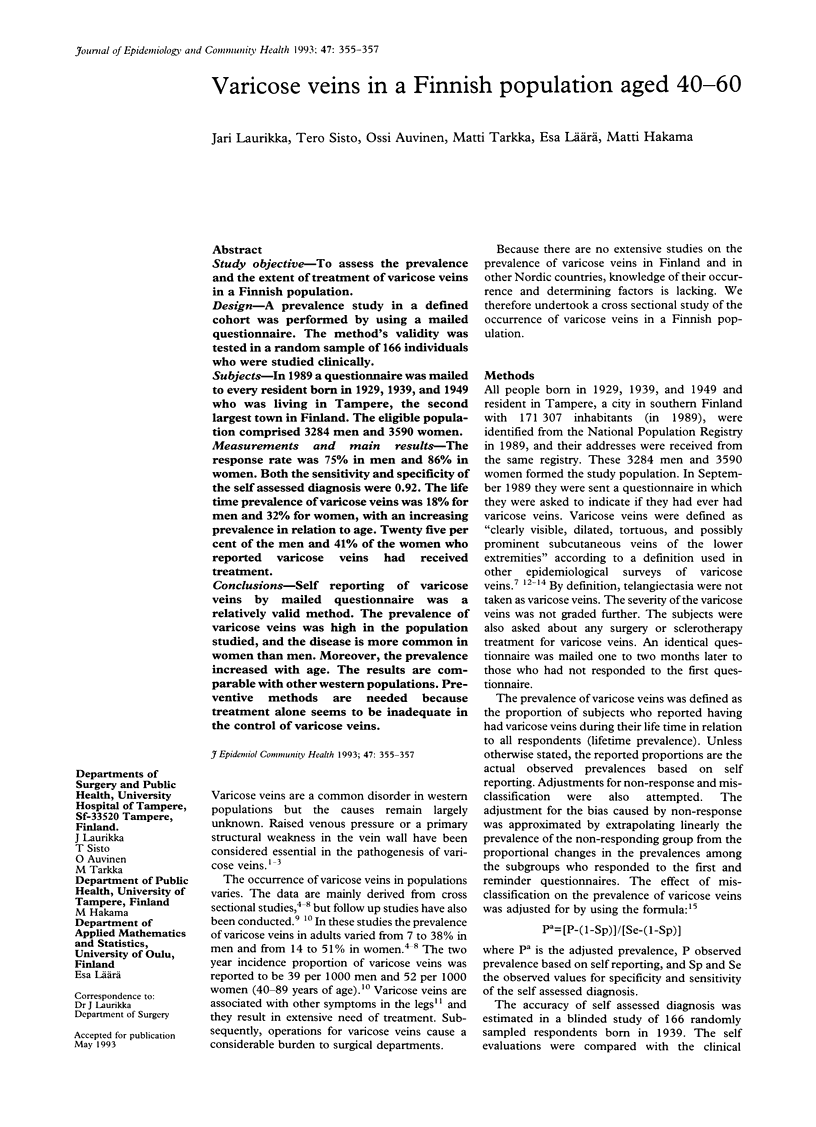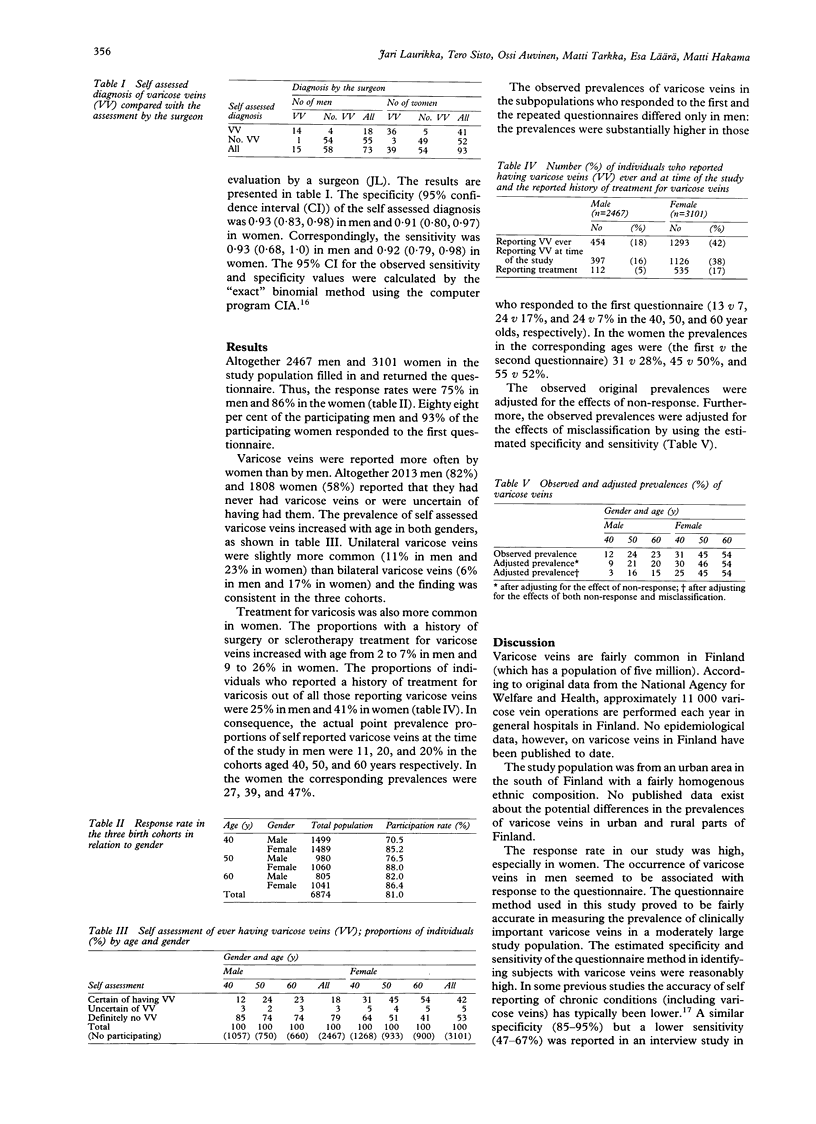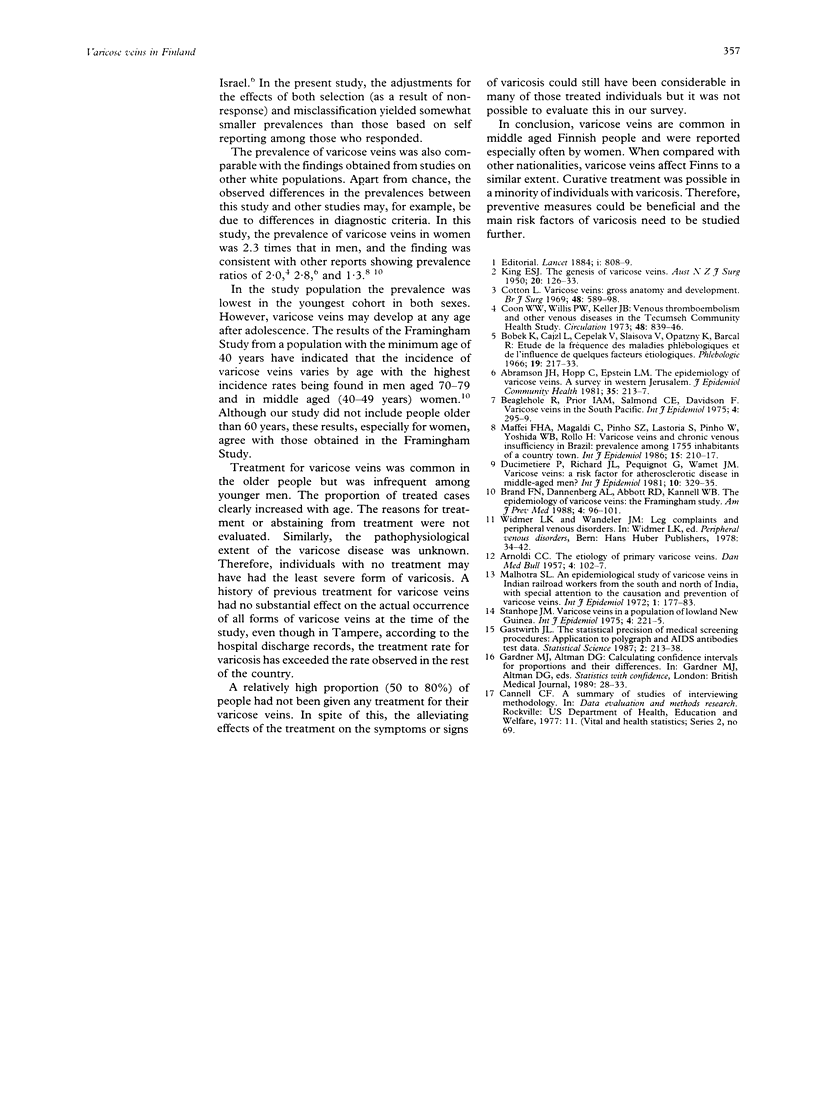Abstract
STUDY OBJECTIVE--To assess the prevalence and the extent of treatment of varicose veins in a Finnish population. DESIGN--A prevalence study in a defined cohort was performed by using a mailed questionnaire. The method's validity was tested in a random sample of 166 individuals who were studied clinically. SUBJECTS--In 1989 a questionnaire was mailed to every resident born in 1929, 1939, and 1949 who was living in Tampere, the second largest town in Finland. The eligible population comprised 3284 men and 3590 women. MEASUREMENTS AND MAIN RESULTS--The response rate was 75% in men and 86% in women. Both the sensitivity and specificity of the self assessed diagnosis were 0.92. The life time prevalence of varicose veins was 18% for men and 32% for women, with an increasing prevalence in relation to age. Twenty five per cent of the men and 41% of the women who reported varicose veins had received treatment. CONCLUSIONS--Self reporting of varicose veins by mailed questionnaire was a relatively valid method. The prevalence of varicose veins was high in the population studied, and the disease is more common in women than men. Moreover, the prevalence increased with age. The results are comparable with other western populations. Preventive methods are needed because treatment alone seems to be inadequate in the control of varicose veins.
Full text
PDF


Selected References
These references are in PubMed. This may not be the complete list of references from this article.
- ARNOLDI C. C. The aetiology of primary varicose veins. Dan Med Bull. 1957 May;4(3):102–107. [PubMed] [Google Scholar]
- Bobek K., Cajzl L., Cepelak V., Slaisova V., Opatzny K., Barcal R. Etude de la fréquence des maladies phlébologiques et de l'influence de quelques facteurs étiologiques. Phlebologie. 1966 Jul-Sep;19(3):217–230. [PubMed] [Google Scholar]
- Brand F. N., Dannenberg A. L., Abbott R. D., Kannel W. B. The epidemiology of varicose veins: the Framingham Study. Am J Prev Med. 1988 Mar-Apr;4(2):96–101. [PubMed] [Google Scholar]
- COTTON L. T. Varicose veins. Gross anatomy and development. Br J Surg. 1961 May;48:589–598. doi: 10.1002/bjs.18004821203. [DOI] [PubMed] [Google Scholar]
- Ducimetiere P., Richard J. L., Pequignot G., Warnet J. M. Varicose veins: a risk factor for atherosclerotic disease in middle-aged men? Int J Epidemiol. 1981 Dec;10(4):329–335. doi: 10.1093/ije/10.4.329. [DOI] [PubMed] [Google Scholar]
- KING E. S. J. The genesis of varicose veins. Aust N Z J Surg. 1950 Nov;20(2):126–133. doi: 10.1111/j.1445-2197.1950.tb03735.x. [DOI] [PubMed] [Google Scholar]
- Maffei F. H., Magaldi C., Pinho S. Z., Lastoria S., Pinho W., Yoshida W. B., Rollo H. A. Varicose veins and chronic venous insufficiency in Brazil: prevalence among 1755 inhabitants of a country town. Int J Epidemiol. 1986 Jun;15(2):210–217. doi: 10.1093/ije/15.2.210. [DOI] [PubMed] [Google Scholar]
- Malhotra S. L. An epidemiological study of varicose veins in Indian railroad workers from the South and North of India, with special reference to the causation and prevention of varicose veins. Int J Epidemiol. 1972 Summer;1(2):177–183. doi: 10.1093/ije/1.2.177. [DOI] [PubMed] [Google Scholar]


